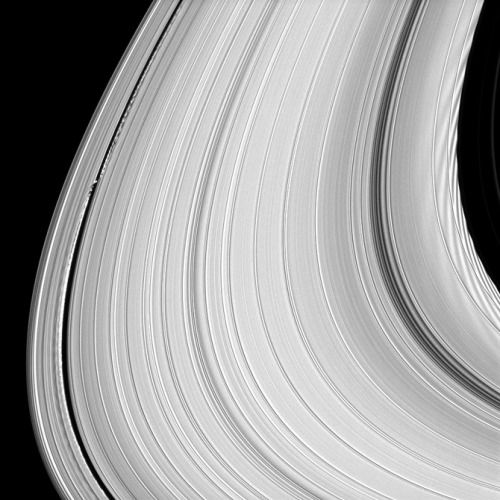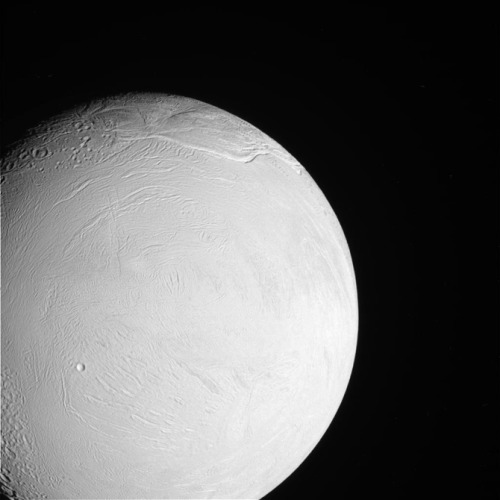the-star-stuff: Sexiest Images From Saturn #1. On the night side of Saturn, the planet casts a
the-star-stuff: Sexiest Images From Saturn #1. On the night side of Saturn, the planet casts a dark shadow over its rings. The moon Tethys can be seen in the upper right of the image, and the moon Enceladus is visible in the lower right. This image was taken May 30, 2010. #2. Cassini did a flyby of the 50-mile-wide Pandora moon on June 3, 2010. #3. In the rings on the left, the moon Daphnis (5 miles across) affects ring material as it orbits. The material on the inner edge of Daphnis orbits faster than the moon, and the material on the outer edge orbits more slowly, which causes the waves. On the right, Pan (17 miles across) also causes waves. Image taken June 3, 2010. #4. The larger Rhea looms over its sibling moon Epimetheus with Saturn and its rings in the background. The two moons are actually about 250,000 miles apart. Rhea is Saturn’s second largest moon at 946 miles across and Epimetheus is only 70 miles across. This image was taken in visible green light on March 24, 2010. #5. Enceladus tiger stripes are active geologic regions that spew out jets of ice and other gases. It is one of only four bodies in the solar system where active eruptions have been seen. Under the outer layer of ice there might be a liquid ocean, which could make the moon capable of supporting life. This image was taken May 28, 2010. #6. Dione is overshadowed by Titan, the largest of Saturn’s moons at 3200 miles across — twice the diameter of our moon, and larger than the planet Mercury. It is also the only moon known to have a dense atmosphere and surface liquid. This image was taken April 20, 2010. #7. Moons Tethys and Rhea are visible beyond Saturn’s southern hemisphere. They orbit in the plane of the planet’s rings, but from this vantage point appear to be below the planet. Tethys is near the center of the image, and Rhea is on the lower right. Image taken June 29,2010. #8. The moon Tethys makes its way around Saturn. Tethys is an icy moon, thought to be composed almost entirely of liquid ice all the way through because its density is almost exactly that of water. This image was taken June 9, 2010. Images: NASA/JPL/Space Science Institute -- source link
Tumblr Blog : the-star-stuff-blog.tumblr.com
#saturn#outer space#astronomy#planets







